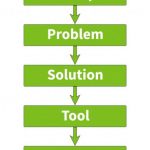I recall meeting with Solido at DAC back in 2009, learning about their Variation Designer tool that allowed circuit designers to quickly find out how their designs performed under the effects of process variation, in effect finding the true corners of the process. Under the hood the Solido tool was using Machine Learning (ML) techniques… Read More
Tag: variation designer
Fast and Accurate Variation-Aware Mixed-Signal Verification of Time-Domain 2-Step ADC
There is an interesting white paper out from Mentor on how a customer used the Solido Varation Designer tool to reduce Monte Carlo simulations. As you may know I worked for Solido for 10+ years up until they were acquired by Mentor in December of 2017. It was an incredible personal and professional experience. I have the highest respect… Read More
EDA CEO Outlook 2018 Partly Cloudy
The funniest line of the EDA CEO Outlook event was that we should rename our Amazon Echos Wally. Yes Wally is that smart and he remembers pretty much everything. I wish I could rename my Echo Wally because my daughter in-law is named Alexa so we have to turn it off when she is over. The discussion took an interesting turn with EDA in the … Read More
Mentor FINALLY Acquires Solido Design
I say finally because it was a long time coming… almost ten years to be exact. I started doing business development work for both Solido and Berkeley Design Automation about ten years ago and have been trying to put them together ever since. The synergy was obvious, like peanut butter and jelly. In fact, this is my third time … Read More
Machine Learning and EDA!
Semiconductor design is littered with complex, data-driven challenges where the cost of error is high. Solido’s new ML (machine learning) Labs, based on Solido’s ML technologies developed over the last 12 years, allows semiconductor companies to collaboratively work with Solido in developing new ML-based EDA products.
Data… Read More
Solido DA is One of Deloitte’s Fastest 50!
As a longtime EDA professional this really made my day. At a time where emerging EDA companies struggle for public validation, it warms my heart to see some very public recognition for an EDA job well done.
Deloitte, a leading Canadian professional financial services firm, announced the winners of their Technology Fast 50 program… Read More
A Better Way for Analog Designers to Perform Variation Analysis
The impact of process variation at advanced nodes is increasing — no surprise there. In recent years, the principal design emphasis to better reflect this variation has been the adoption of two new methodologies: (1) advanced on-chip variation (AOCV, as well as POCV/LVF) for digital static timing analysis, and (2) advanced… Read More
Improvements in SRAM Yield Variation Analysis
The design of an SRAM array requires focus on the key characteristics of readability, writeability, and read stability. As technology scaling has enabled the integration of large (cache) arrays on die, the sheer number of bitcells has necessitated a verification methodology that focuses on “statistical high-sigma” variation… Read More
Replacing the British Museum Algorithm
In principle, one way to address variation is to do simulations at lots of PVT corners. In practice, most of this simulation is wasted since it adds no new information, and even so, important corners will get missed. This is what Sifuei Ku of Microsemi calls the British Museum Algorithm. You walk everywhere. And if you don’t walk to… Read More










